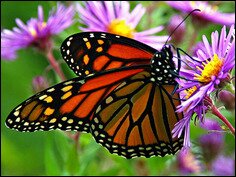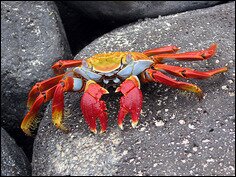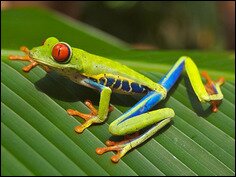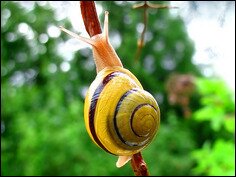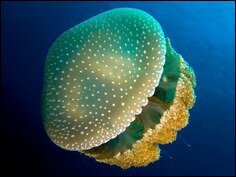What Do Mollusks Eat?
Current Category: Mollusks.
The invertebrate phylum Mollusca is huge, comprising around 85,000 known species of mollusks (or molluscs for British English). This phylum is the largest marine phylum and makes up around 23 percent of the named marine animals. There are also many freshwater and terrestrial (land) mollusks. This is a very diverse phylum, with a lot of variety in habitat, size, shape and behavior. Mollusca is divided up into nine or ten classes, although two are now extinct.
 White-lipped snail (C. hortensis). Photo by Mad Max, Kirkland, WA.
White-lipped snail (C. hortensis). Photo by Mad Max, Kirkland, WA.
Cephalopod mollusks
The cephalopod mollusks, like octopus and cuttlefish, are among the most neurologically complex invertebrate animals. The giant and colossal squids are also the biggest species of invertebrates that we know. However, the humble slugs and snails are the most common mollusks and make up 80 per cent of the total number of mollusk species. It’s the feeding habits of this subset that we’ll look at now.
Strange way to eat food
Most smaller mollusks have muscular mouth-pouches that contain radulae, or tongues. These radulae bear thousands of tiny chitinous teeth, which are arranged in rows. These rows are replaced from the rear of the animal as they wear out. These radulae scrape bacteria and algae off rocks and other surfaces. The radulae are supported by the odontophore, which is a cartilaginous platform that can be moved and extended beyond the body of the mollusk.
 The 5 classes of phylum Mollusca namely Bivalvia, Gastropoda, Polyplacophora, Cephalopoda and Scaphopoda. Illustration by Merriam-Webster, Inc.
The 5 classes of phylum Mollusca namely Bivalvia, Gastropoda, Polyplacophora, Cephalopoda and Scaphopoda. Illustration by Merriam-Webster, Inc.
What do they eat?
Most land mollusks, like slugs, as many a gardener will confirm, can’t resist plants, especially soft leaves, fruits and vegetables. They slide over the plants, while their radulae rasp over the surface, grinding away at the top layers. Other mollusks will feed more on rocks and other reasonably flat surfaces to remove hard deposits of bacteria and algae. Marine mollusks, like clams, are generally filter feeders and can go after a variety of plankton, tiny krill and small crustaceans like copepod and amphipoda. For bigger sized mollusks, they can eat other animals like fish, crustaceans and other invertebrates.
 A veined octopus eating a crab. Photo by .
A veined octopus eating a crab. Photo by .
Catching their food
The mouths of mollusks also contain glands that secrete slimy and sticky mucus. The food particles stick to this mucus once they are removed from the feeding surfaces. Tiny, waving hairs, or cilia, drive the food-rich mucus into the animal, towards the stomach. The mucus also forms into a long string.
Once in the stomach
Towards the rear of the mollusk’s stomach, there’s a tapered end which projects into the hind gut. This is called the prostyle, and it’s a backward-facing cone of feces and mucus. This cone is itself rotated by more cilia so that it acts like a bobbin and winds the string of mucus onto itself. The food is removed from this mucus string before it reaches the prostyle, though, as digestive acids make the mucus less sticky, so the food particles float away.
 Gonatus feeding on a lanternfish (myctophid fish). Pic by MBARI.
Gonatus feeding on a lanternfish (myctophid fish). Pic by MBARI.
Sorting the food
Once freed, these food particles are sorted through by another group of cilia. These cilia send smaller particles, which are mainly minerals (remember that the radulae of some species scrape at rocks) to the prostyle to be excreted. Larger particles, mainly food, get sent to the cecum (a stomach pouch with no exit) where they are digested. This is quite a primitive sorting process.
Getting rid of the waste
Every now and then, circular (or sphincter) muscles at the entrance to the hindgut contract around the prostyle, pinching it off to stop it becoming too big. This discarded part is removed from the body via the anus, which is in the mantle cavity.
Continue reading: Mollusk food chain.



